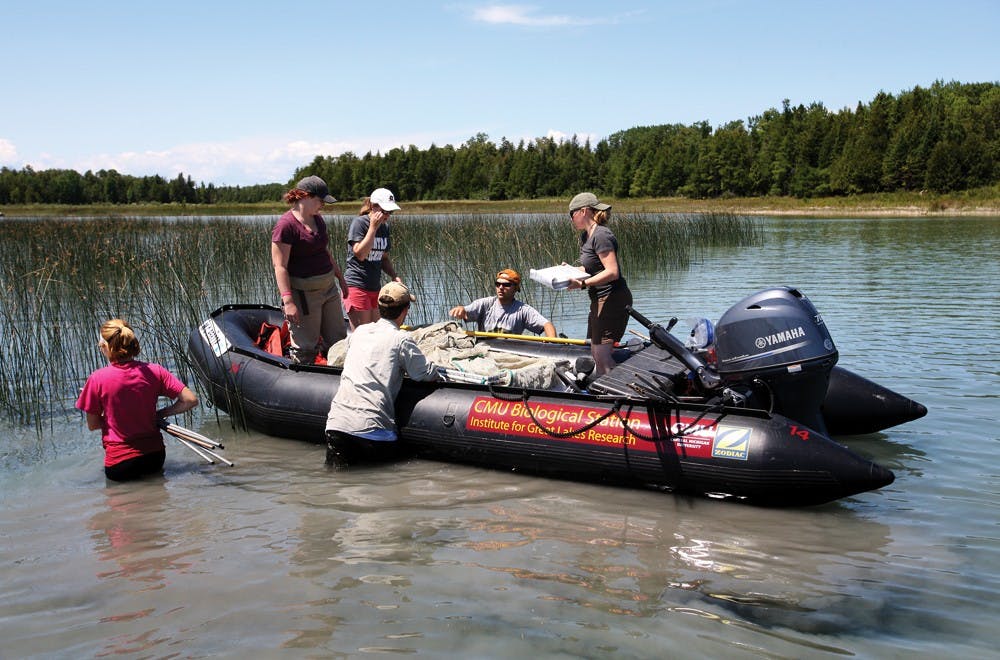CMU professor aids detection of invasive species

Water sampling techniques developed by a Central Michigan University professor led to the detection of a new invasive species of carp in the Kalamazoo River.
Andrew Mahon, Institute for Great Lakes Research scientist and assistant professor of biology, is one of the scientists who pioneered the environmental DNA detection methods used by Michigan Department of Natural Resources and U.S. Fish and Wildlife Service officials.
The groups announced the presence of Asian silver carp in the lower part of the river in Allegan County Oct. 16.
Asian silver carp are known to leap out of the water when startled, disrupting commercial and recreational fishing operations. The Michigan DNR estimates the damages of invasive species in the United States to total more than $123 billion dollars annually.
"A tremendous number of new species are being introduced all the time and essentially we are playing Russian roulette with the ecosystem," said Ian Davidson, dean of the College of Science and Technology. "Silver and bighead carp are the things we are worried about now. At some point we need to take preventing those introductions are seriously because we are jeopardizing the ecosystem."
The U.S. Fish and Wildlife Service uses the eDNA surveillance tool to monitor for the genetic presence of an aquatic species. Currently, eDNA is used to monitor for the genetic presence of Asian carp.
Compared to traditional methods for surveying of aquatic species (netting, electrofishing, rotenone application, etc.), the increased sensitivity of this method could be a valuable asset not only for invasive species but for threatened and endangered species, as well.
These fish pose a significant threat to the ecosystem of the Great Lakes and Michigan’s $7.5 billion fishing industry. The fish are known to quickly reproduce and compete for food with other native species, which is dangerous because the invasive species have no natural predators and reside deep in the lakes.
According to the Michigan Department of Environmental Quality, invasive species can have a significant economic effect on waterfront property values, tourism, utilities and other industries.
One of 200 samples taken from the lower part of the Kalamazoo River tested positive for silver carp eDNA, indicating that an Asian carp may be beginning to enter the Great Lakes.
The DNR estimates 209 or more invasive species have been introduced into the Great Lakes basin. They are recognized as the cause of a 46 percent decline of federally listed endangered species populations.
"On average we have one new invader every eight months, so it's a matter of what we are doing now before we see huge crashes in the fishery," said Donald Uzarski, director of the IGLR.
These species are introduced in several ways, commonly from cargo ships from the Atlantic Ocean. As they offload cargo in America, they release ballast water containing unique ecosystems that live in their ballast tanks.
These ships release ballast water from the ocean and refill with Great Lakes water, creating a cycle of foreign water being dumped in the basin.



